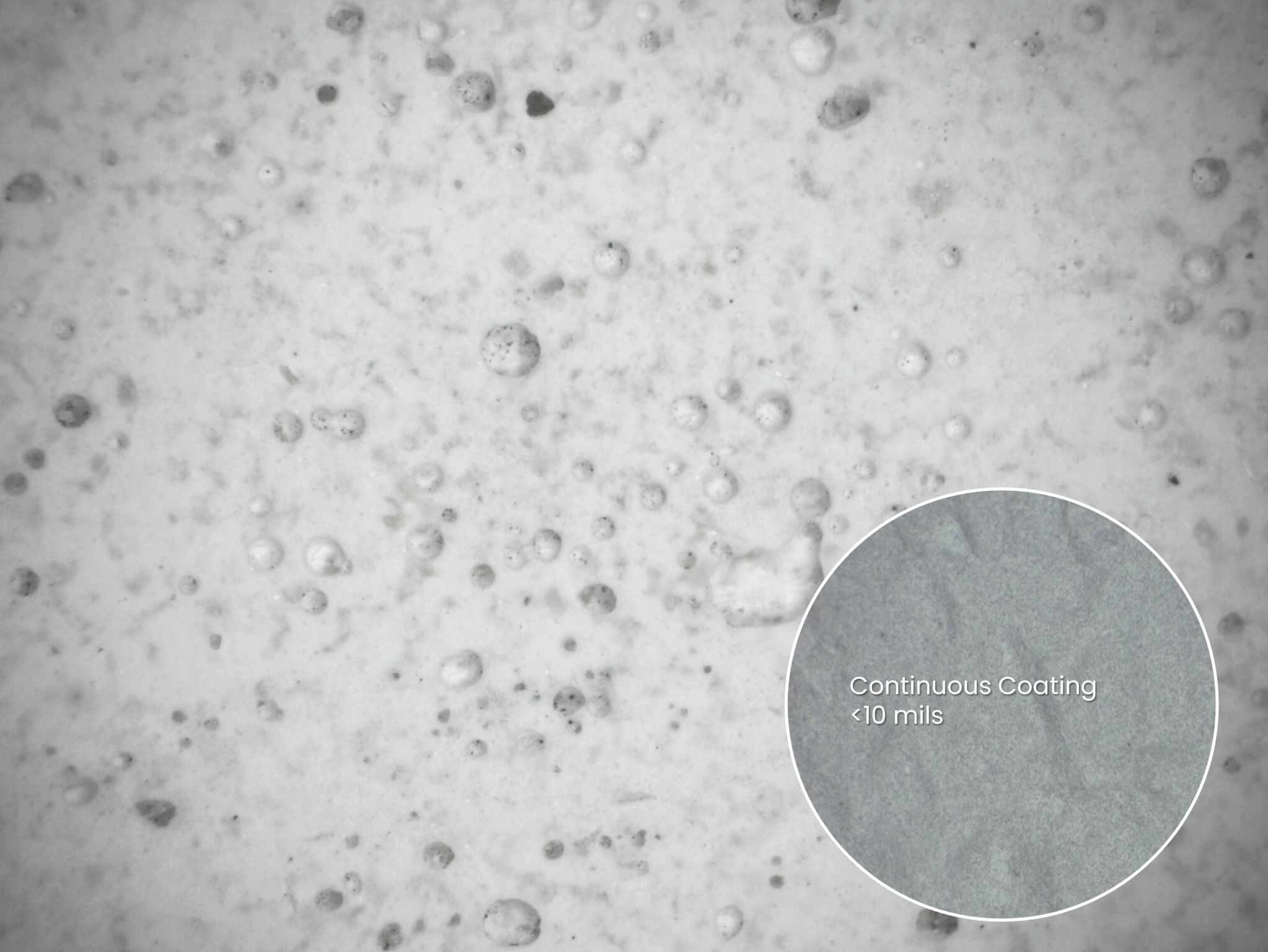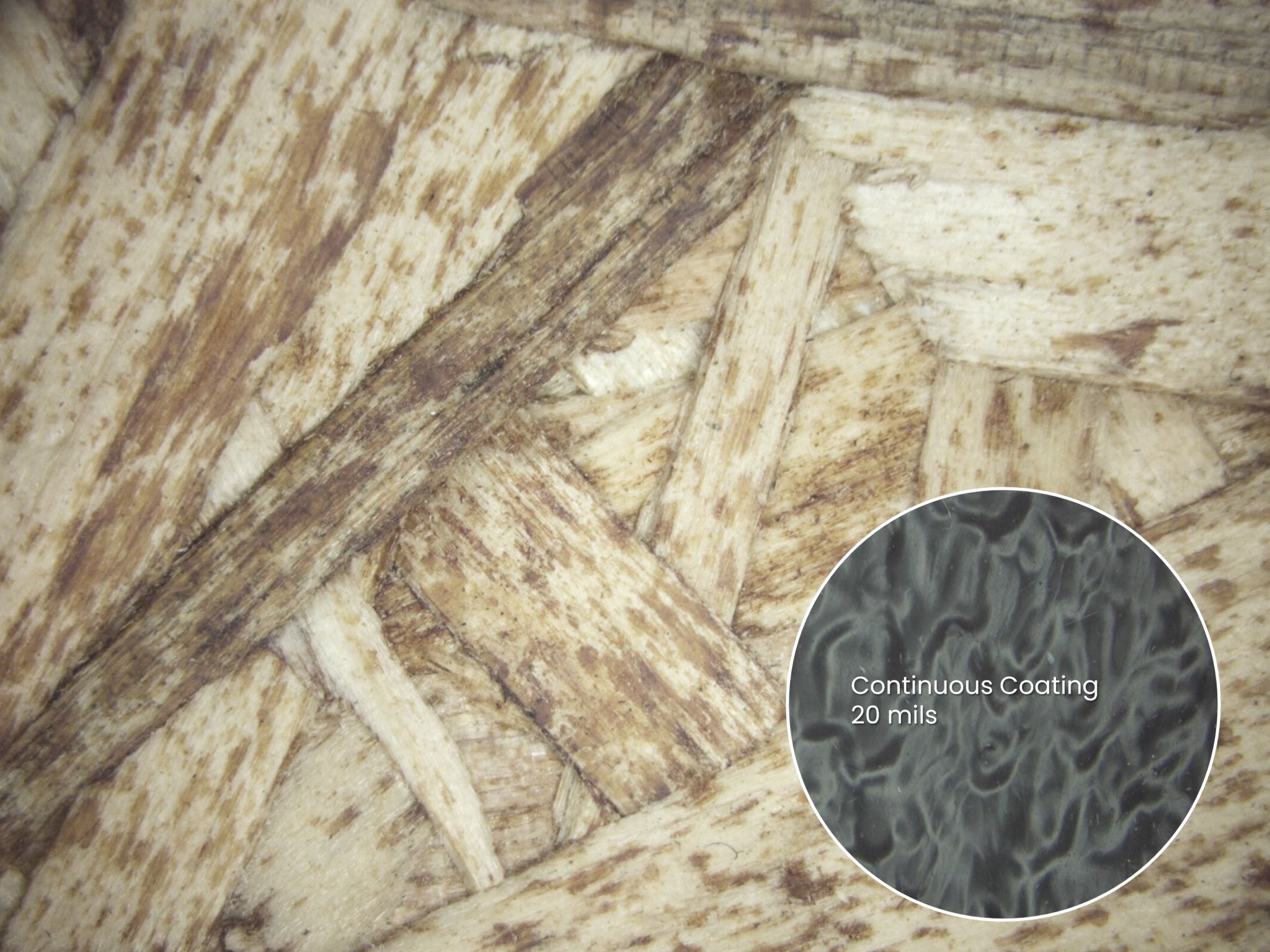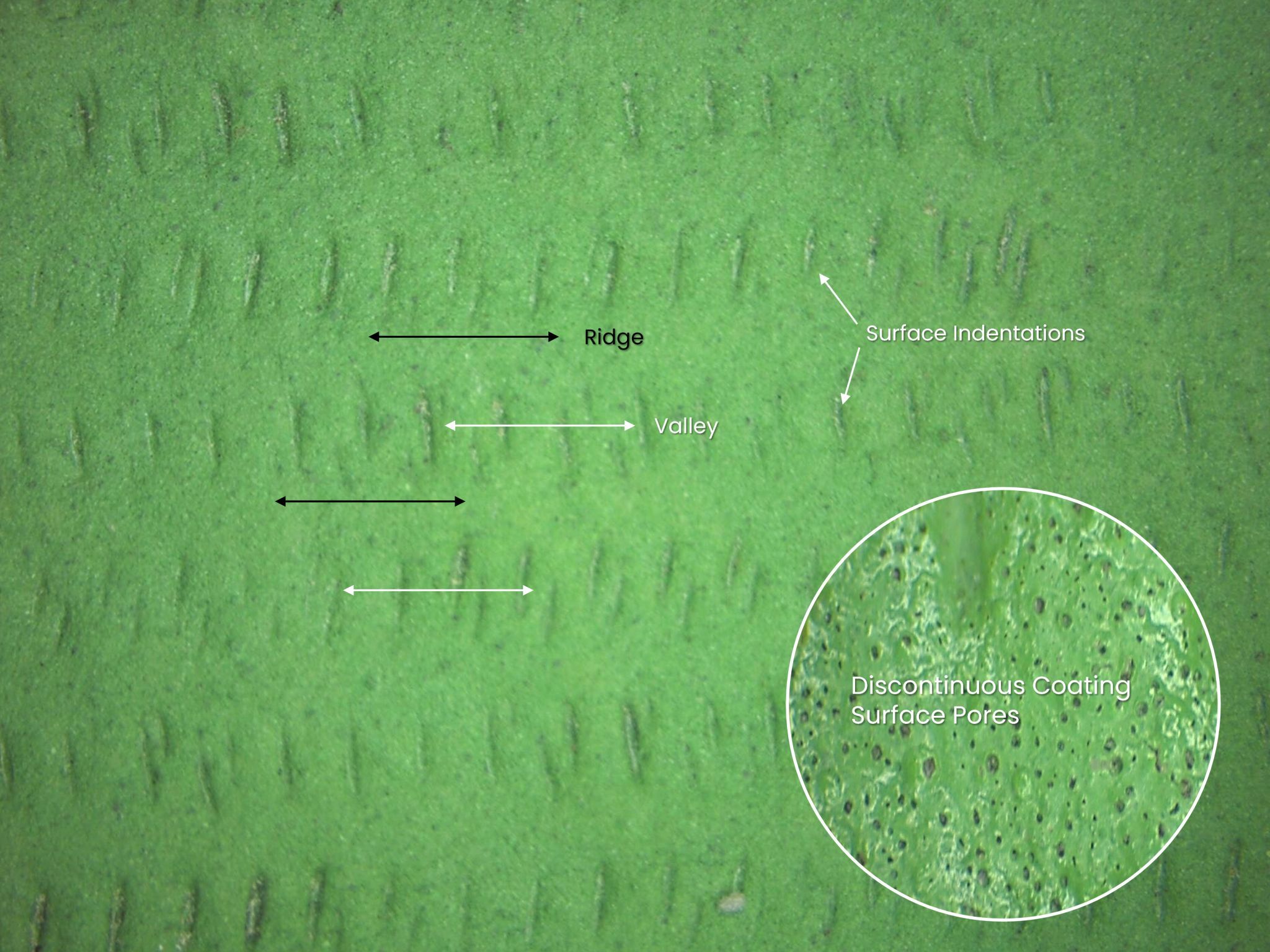Tags: #buildingmaterials #buildingproducts #buildingscience #coatings #materialsscience #waterresistance



A coating is a coating when viewed macroscopically, but not necessarily when viewed microscopically. Three examples of coating challenges . . .
Cementitious Materials – These materials, even those having microscopic pores, require careful coating to avoid water penetration. Application techniques are therefore important as are the attributes of the coating itself. Get it wrong and adhesion suffers. Get it right and surface pores are taken out of play.
OSB – It’s one of the most challenging substrates to coat. Like cementitious materials, it has crazy pore structure made worse by variation in surface strand topography. Wood also expands; so, unless the coating maintains proper elasticity, and is applied to a proper thickness, it will fail. Some say OSB can’t be coated. But I’ve shown that it can with a coating that has resisted 21.6” of hydrostatic pressure for over 8 months.
Integrated WRB panels – We see micro ridges and surface indentations on some integrated WRB panels, including the wood-based product shown here.
Microscopic ridges can challenge tapes that struggle to completely wet out over these tiny peaks and valleys. Interestingly, the same panels also have microscopic pores that change form and size when wet.
Think small, think ‘water small’.